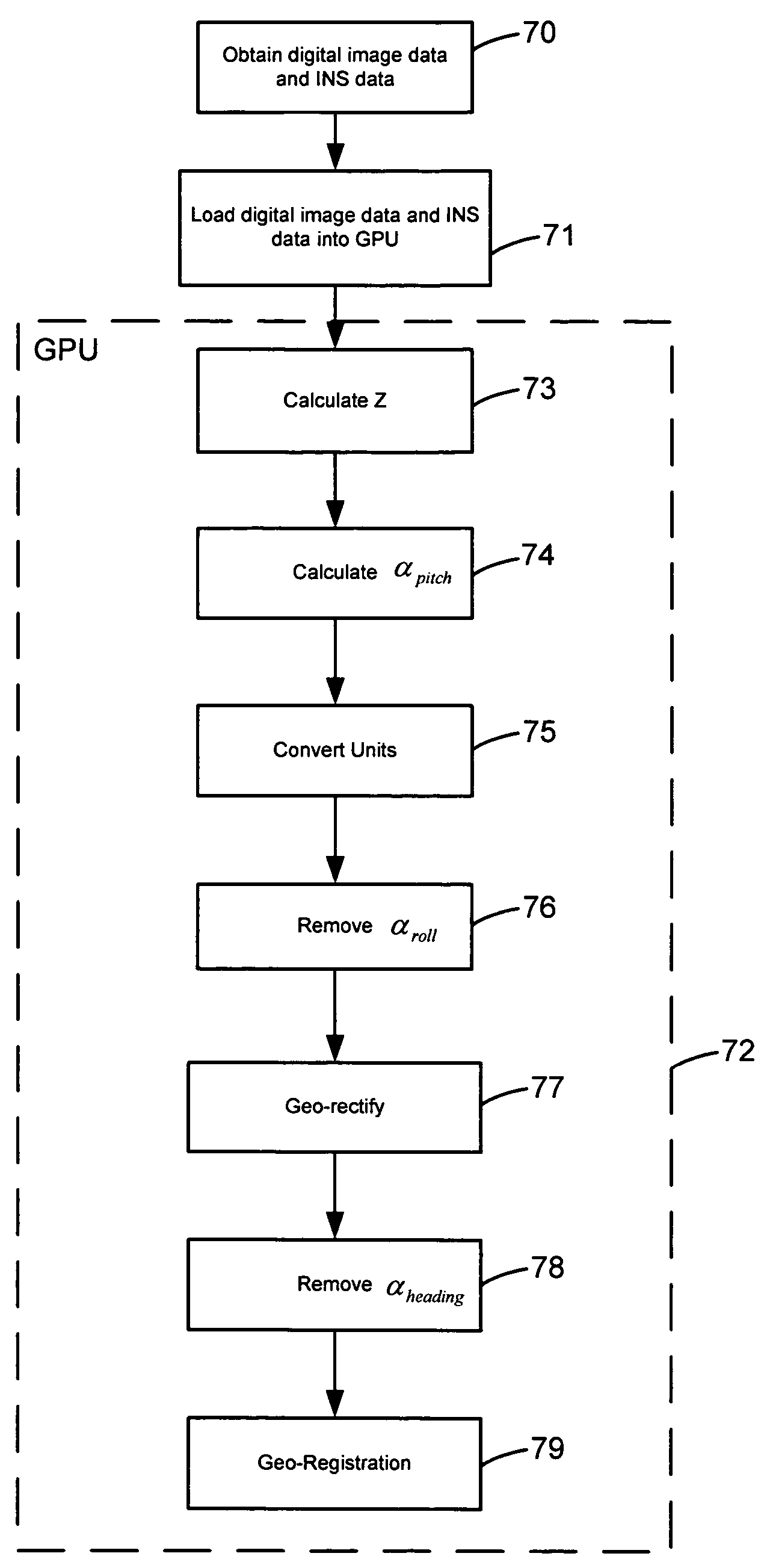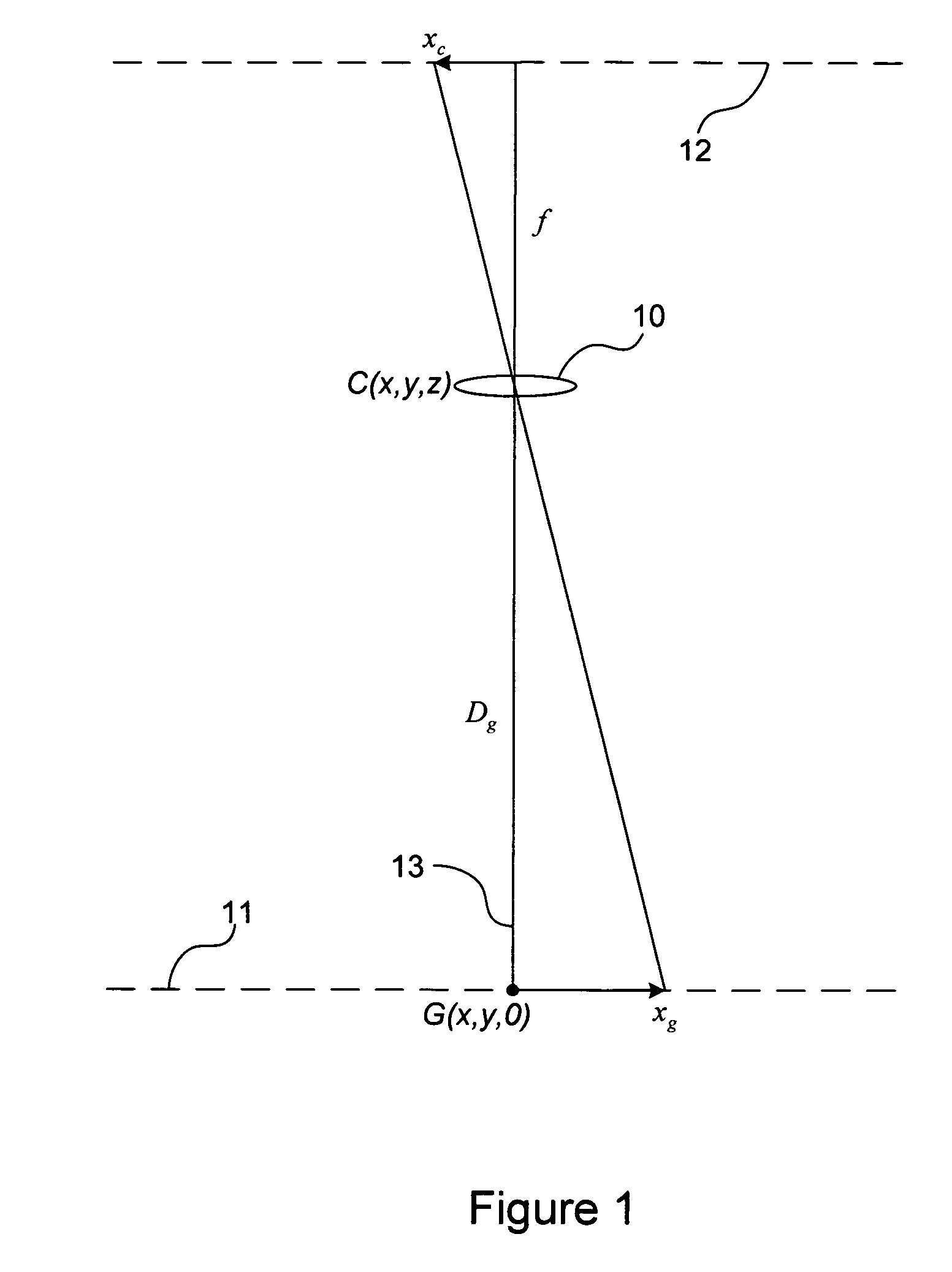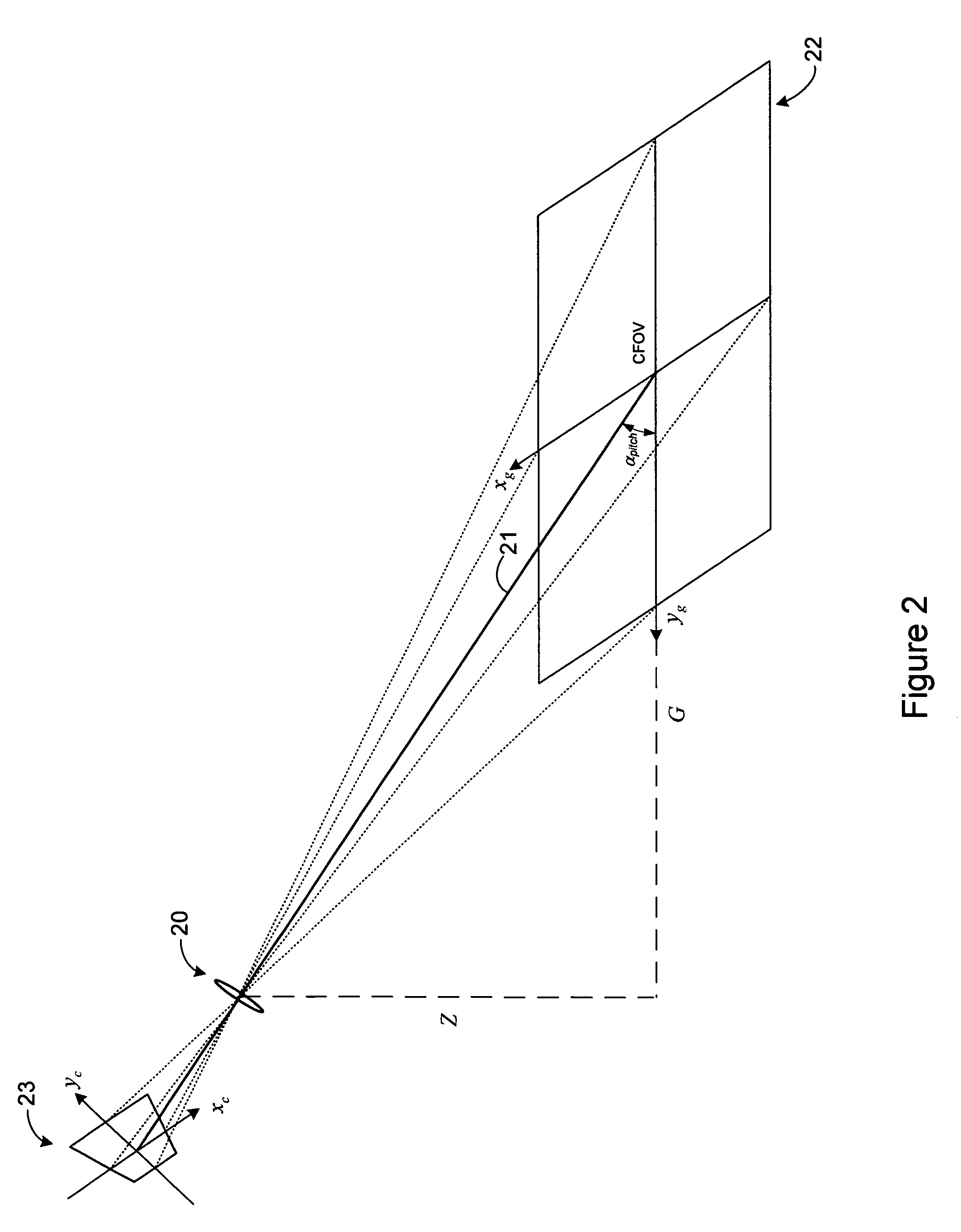Real-time geo-registration of imagery using COTS graphics processors
a graphics processor and imagery technology, applied in the field of geo-registration methods, can solve the problems of difficult real-time visualization of live data, high computational cost of image processing, and inability to accurately represent the image, and achieve the effect of less expensive and higher resolution images
- Summary
- Abstract
- Description
- Claims
- Application Information
AI Technical Summary
Benefits of technology
Problems solved by technology
Method used
Image
Examples
Embodiment Construction
A. Theory of Geo-registration
[0027]In order to describe the geometric transformations involved in geo-rectification, FIG. 1 shows the simple case of first-order transverse imaging of a planar object surface that is perpendicular to the optical axis, onto the real image plane of a camera. In particular, FIG. 1 shows a camera system, represented by lens 10, located at a position C(x, y, z) in space, and staring in a nadir-looking direction along an optical axis 13 at a point G(x, y, 0) on the ground plane 11. The distance of the optical axis 13 between the lens 10 and the point G of the planar object is shown as Dg. If the focal length of the lens is f, and the distance between the lens 10 and a real image plane is Dc (not shown), then the thin lens equation is:
[0028]1f=1Dc+1Dg(1)
Furthermore, if we assume a perfect thin lens (i.e. neglecting the effects of optical aberrations) and assume that Dg>>f, then the real image distance Dc is approximately equal to the focal length f as follow...
PUM
 Login to View More
Login to View More Abstract
Description
Claims
Application Information
 Login to View More
Login to View More - R&D
- Intellectual Property
- Life Sciences
- Materials
- Tech Scout
- Unparalleled Data Quality
- Higher Quality Content
- 60% Fewer Hallucinations
Browse by: Latest US Patents, China's latest patents, Technical Efficacy Thesaurus, Application Domain, Technology Topic, Popular Technical Reports.
© 2025 PatSnap. All rights reserved.Legal|Privacy policy|Modern Slavery Act Transparency Statement|Sitemap|About US| Contact US: help@patsnap.com



